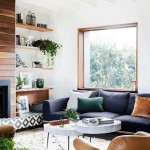How To Decorate a Room With Low Slanted Ceilings
Decorating a room with low slanted ceilings presents a unique set of challenges. The angled planes can make a space feel smaller and more confined than it actually is. However, with careful planning and the right design choices, it is possible to create a functional and aesthetically pleasing environment. The key is to understand how to manipulate visual perception and maximize the available space. This involves strategic furniture placement, color selection, lighting design, and the incorporation of specific design elements.
Successfully decorating a room with low slanted ceilings requires a different approach than decorating a room with standard ceilings. Traditional design principles often need to be adapted to address the specific constraints of the space. Failing to do so can result in a room that feels cramped, unbalanced, and visually unappealing. The goal is to create a sense of spaciousness and openness while still maintaining comfort and functionality.
Optimizing Vertical Space and Height
One of the primary challenges of decorating a room with low slanted ceilings is the limited vertical space. Emphasizing the existing height, however minimal, is crucial to creating a more open feel. This can be achieved through several techniques, including strategic furniture selection and vertical design elements. The aim is to draw the eye upward, creating the illusion of greater height and reducing the feeling of claustrophobia that can be associated with low ceilings.
Furniture Selection: Opt for low-profile furniture. Tall furniture can exacerbate the feeling of confinement and make the space feel even smaller. Sofas, chairs, and tables with low backs and legs help to maintain a visual sense of openness. Consider furniture that sits close to the floor to maximize the perceived height of the room. Floating shelves and wall-mounted cabinets also contribute to this effect by freeing up floor space and creating a clean, uncluttered look. Built-in storage options that utilize the angles of the ceiling are also highly beneficial, maximizing storage potential without adding visual bulk.
Vertical Design Elements: Employ vertical stripes or patterns on walls to draw the eye upward. Vertical elements, such as tall, narrow mirrors or artwork, can create the illusion of height. Floor-to-ceiling curtains, even if they extend only partway up the slanted wall, can also contribute to this effect. The placement of these elements needs careful consideration. Focus on areas where the ceiling is at its lowest to minimize the stark contrast and to blend the slanted surface.
Mirror Placement: Strategically placed mirrors can reflect light and create the illusion of a larger space. Position mirrors to reflect natural light from windows, amplifying the brightness and making the room feel more open. Larger mirrors, particularly those placed on walls perpendicular to the slanted ceiling, can be especially effective in creating a sense of depth. Avoid placing mirrors directly opposite the slanted ceiling, as this can accentuate the angle and make the room feel more cramped.
Color Palette and Lighting Strategies
The color palette and lighting design are critical components in decorating a room with low slanted ceilings. The right color choices can visually expand the space, while the appropriate lighting can eliminate shadows and brighten the room effectively. Conversely, poor color and lighting choices can make the room feel darker and more confined.
Color Selection: Light and neutral colors are ideal for rooms with low slanted ceilings. White, off-white, pale gray, and soft pastel shades reflect light and create a sense of spaciousness. Using a monochromatic color scheme, where different shades of the same color are used throughout the room, can also create a cohesive and visually expansive effect. Avoid dark or overly saturated colors, as they can absorb light and make the room feel smaller. Consider painting the ceiling a shade lighter than the walls to visually lift the ceiling and create a sense of height.
Lighting Design: Adequate and well-placed lighting is essential in a room with low slanted ceilings. Avoid using only overhead lighting, as this can create harsh shadows and accentuate the low ceiling height. Instead, opt for a combination of ambient, task, and accent lighting. Recessed lighting, track lighting, and wall sconces are all excellent options for providing ambient light without taking up valuable floor space. Task lighting, such as table lamps and floor lamps, can be used to illuminate specific areas of the room. Accent lighting, such as picture lights and spotlights, can be used to highlight artwork and architectural features.
Light Fixture Selection: Choose light fixtures carefully, considering both their function and their visual impact. Avoid large, ornate chandeliers or pendants that hang too low, as these can obstruct the view and make the ceiling feel even lower. Instead, opt for flush-mount or semi-flush-mount fixtures that sit close to the ceiling. Wall sconces and track lighting can also be used to direct light upward, creating the illusion of height. Consider using LED bulbs, which are energy-efficient and produce a brighter, more natural light.
Maximizing Functionality and Storage
Rooms with low slanted ceilings often present challenges in terms of functionality and storage. The limited headroom and unusual angles can make it difficult to arrange furniture and store belongings efficiently. Maximizing functionality and storage requires creative solutions that utilize the unique features of the space.
Storage Solutions: Utilize wall space for storage. Install shelves that conform to the angle of the ceiling, creating custom storage solutions that fit seamlessly into the space. Built-in cabinets and drawers can also be used to maximize storage potential without taking up valuable floor space. Consider using storage ottomans or benches, which provide seating as well as storage space. In areas with very low headroom, use storage boxes or baskets that can be easily accessed and moved.
Furniture Arrangement: Arrange furniture to maximize traffic flow and create a sense of openness. Position furniture away from the lowest parts of the ceiling to avoid obstructing the view and creating a feeling of confinement. Use furniture to define different zones within the room, such as a seating area, a work area, or a sleeping area. Avoid overcrowding the room with too much furniture, as this can make it feel smaller and more cluttered. Place larger pieces of furniture against the walls to free up floor space and create a more open feel.
Multi-Functional Furniture: Incorporate multi-functional furniture to save space and enhance the functionality of the room. Sofas that convert into beds, tables that fold down, and storage ottomans are all excellent options for maximizing the use of limited space. Consider using a room divider to separate different areas of the room without constructing permanent walls. These dividers can also provide additional storage space.
Window Treatments: Opt for simple and streamlined window treatments that do not obstruct the view or block natural light. Avoid heavy or ornate curtains, as these can make the room feel smaller and darker. Instead, choose light and airy fabrics, such as linen or cotton. Blinds or shades are also a good option, as they can be easily adjusted to control the amount of light entering the room. Consider installing window treatments that extend from the ceiling to the floor, even if they only cover part of the window, to create the illusion of height.
By carefully considering these principles, decorating a room with low slanted ceilings can be a rewarding endeavor. It requires patience and creativity, but the result is a space that is both functional and aesthetically pleasing.

How To Decorate Rooms With Slanted Ceilings Or Walls

How To Decorate A Low Sloping Ceiling Google Search Sloped Bedroom Slanted Design

How To Decorate Rooms With Slanted Ceilings Or Walls

24 Dreamy Low Sloped Ceiling Bedroom Ideas

How To Decorate Rooms With Slanted Ceilings Or Walls

How To Decorate A Bedroom With Slanted Ceiling The Nordroom

How To Decorate A Bedroom With Slanted Ceiling The Nordroom

Decorating With Slanted Ceilings At Home Ashley

How To Decorate A Slanted Wall Bedroom

How To Decorate Rooms With Slanted Ceilings Or Walls
Related Posts







